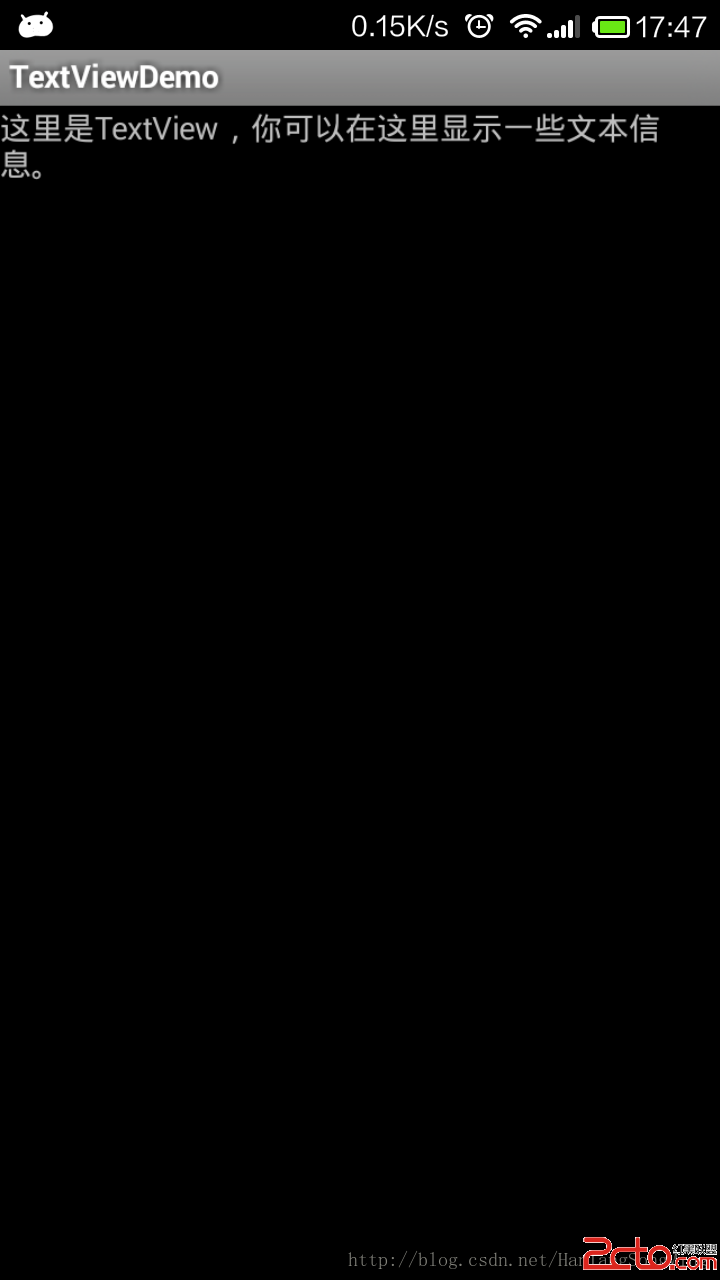編輯:關於Android編程
本文和大家一起了解了一下android客戶端與服務端是怎樣交互的,具體內容如下
1.後台使用簡單的servlet,支持GET或POST。這個servlet最終返回給前台一個字符串flag,值是true或false,表示登錄是否成功。
servlet使用之前需要配置,主義servlet的servlet-name要和servlet-mapping的servlet-name一致,否則找不到路徑
我是在myEclipse上創建的一個web service 項目,然後部署到tomcat服務器上以便android客戶端訪問
<servlet>
<servlet-name>helloWorld</servlet-name>
<servlet-class>com.zhongzhong.wap.action.HelloServlet</servlet-class>
</servlet>
<servlet-mapping>
<servlet-name>helloWorld</servlet-name>
<url-pattern>/queryOrder</url-pattern>
</servlet-mapping>
import java.io.IOException;
import java.io.PrintWriter;
import javax.servlet.ServletException;
import javax.servlet.http.HttpServlet;
import javax.servlet.http.HttpServletRequest;
import javax.servlet.http.HttpServletResponse;
import javax.servlet.http.HttpSession;
import com.zhongzhong.wap.bean.UserBean;
public class HelloServlet extends HttpServlet {
@Override
protected void doGet(HttpServletRequest req, HttpServletResponse resp)
throws ServletException, IOException {
doPost(req, resp);
}
@Override
protected void doPost(HttpServletRequest req, HttpServletResponse resp)
throws ServletException, IOException {
resp.setContentType(text/html);
PrintWriter out = resp.getWriter();
Boolean flag = false;
String userName = req.getParameter(un);
String password = req.getParameter(pw);
if(userName.equals(htp)&&password.equals(123))
{
flag = true;
}
else flag = false;
System.out.println(userName:+userName+ password:+password);
out.print(flag);
out.flush();
out.close();
}
}
2.然後我是在安卓的ADT上創建一個安卓項目,建立兩個Activity,分別作為登錄界面和登錄成功界面。
<relativelayout android:layout_height="match_parent" android:layout_width="match_parent" android:paddingbottom="@dimen/activity_vertical_margin" android:paddingleft="@dimen/activity_horizontal_margin" android:paddingright="@dimen/activity_horizontal_margin" android:paddingtop="@dimen/activity_vertical_margin" tools:context=".MainActivity" xmlns:android="http://schemas.android.com/apk/res/android" xmlns:tools="http://schemas.android.com/tools">
<textview android:id="@+id/textView1" android:layout_alignparenttop="true" android:layout_centerhorizontal="true" android:layout_height="wrap_content" android:layout_margintop="40dp" android:layout_width="wrap_content" android:text="HelloWorld登陸示例">
<edittext android:ems="10" android:hint="請輸入賬號" android:id="@+id/et_user" android:layout_below="@+id/textView1" android:layout_centerhorizontal="true" android:layout_height="wrap_content" android:layout_margintop="33dp" android:layout_width="wrap_content">
<requestfocus>
</requestfocus></edittext>
<edittext android:ems="10" android:hint="請輸入密碼" android:id="@+id/et_psw" android:inputtype="textPassword" android:layout_below="@+id/et_user" android:layout_centerhorizontal="true" android:layout_height="wrap_content" android:layout_margintop="40dp" android:layout_width="wrap_content"><button android:id="@+id/btn_login" android:layout_below="@+id/et_psw" android:layout_centerhorizontal="true" android:layout_height="wrap_content" android:layout_margintop="37dp" android:layout_width="wrap_content" android:text="登陸"></button></edittext></textview></relativelayout>
<relativelayout android:layout_height="match_parent" android:layout_width="match_parent" android:paddingbottom="@dimen/activity_vertical_margin" android:paddingleft="@dimen/activity_horizontal_margin" android:paddingright="@dimen/activity_horizontal_margin" android:paddingtop="@dimen/activity_vertical_margin" tools:context=".NaviActivity" xmlns:android="http://schemas.android.com/apk/res/android" xmlns:tools="http://schemas.android.com/tools">
<textview android:layout_alignparenttop="true" android:layout_centerhorizontal="true" android:layout_height="wrap_content" android:layout_margintop="46dp" android:layout_width="wrap_content" android:text="登陸成功">
</textview></relativelayout>
3.HTTP的訪問公共類,用於處理GET和POST請求。
package com.example.logindemo;
import java.util.ArrayList;
import java.util.List;
import java.util.Map;
import org.apache.http.HttpResponse;
import org.apache.http.NameValuePair;
import org.apache.http.client.HttpClient;
import org.apache.http.client.entity.UrlEncodedFormEntity;
import org.apache.http.client.methods.HttpGet;
import org.apache.http.client.methods.HttpPost;
import org.apache.http.impl.client.DefaultHttpClient;
import org.apache.http.message.BasicNameValuePair;
import org.apache.http.util.EntityUtils;
import android.content.Entity;
import android.util.Log;
public class HttpUtil {
// 創建HttpClient對象
public static HttpClient httpClient = new DefaultHttpClient();
public static final String BASE_URL = http://192.168.3.14:8090/HelloWord/;
/**
*
* @param url
* 發送請求的URL
* @return 服務器響應字符串
* @throws Exception
*/
public static String getRequest(String url) throws Exception {
// 創建HttpGet對象。
HttpGet get = new HttpGet(url);
// 發送GET請求
HttpResponse httpResponse = httpClient.execute(get);
// 如果服務器成功地返回響應
if (httpResponse.getStatusLine().getStatusCode() == 200) {
// 獲取服務器響應字符串
String result = EntityUtils.toString(httpResponse.getEntity());
return result;
} else {
Log.d(服務器響應代碼, (new Integer(httpResponse.getStatusLine()
.getStatusCode())).toString());
return null;
}
}
/**
*
* @param url
* 發送請求的URL
* @param params
* 請求參數
* @return 服務器響應字符串
* @throws Exception
*/
public static String postRequest(String url, Map<string, string=""> rawParams)
throws Exception {
// 創建HttpPost對象。
HttpPost post = new HttpPost(url);
// 如果傳遞參數個數比較多的話可以對傳遞的參數進行封裝
List<namevaluepair> params = new ArrayList<namevaluepair>();
for (String key : rawParams.keySet()) {
// 封裝請求參數
params.add(new BasicNameValuePair(key, rawParams.get(key)));
}
// 設置請求參數
post.setEntity(new UrlEncodedFormEntity(params, UTF-8));
// 發送POST請求
HttpResponse httpResponse = httpClient.execute(post);
// 如果服務器成功地返回響應
if (httpResponse.getStatusLine().getStatusCode() == 200) {
// 獲取服務器響應字符串
String result = EntityUtils.toString(httpResponse.getEntity());
return result;
}
return null;
}
}
</namevaluepair></namevaluepair></string,>
4.IntentService服務,用於在後台以隊列方式處理耗時操作。
package com.example.logindemo;
import java.util.HashMap;
import android.app.IntentService;
import android.content.Intent;
import android.util.Log;
public class ConnectService extends IntentService {
private static final String ACTION_RECV_MSG = com.example.logindemo.action.RECEIVE_MESSAGE;
public ConnectService() {
super(TestIntentService);
// TODO Auto-generated constructor stub
}
@Override
protected void onHandleIntent(Intent intent) {
// TODO Auto-generated method stub
/**
* 經測試,IntentService裡面是可以進行耗時的操作的
* IntentService使用隊列的方式將請求的Intent加入隊列,
* 然後開啟一個worker thread(線程)來處理隊列中的Intent
* 對於異步的startService請求,IntentService會處理完成一個之後再處理第二個
*/
Boolean flag = false;
//通過intent獲取主線程傳來的用戶名和密碼字符串
String username = intent.getStringExtra(username);
String password = intent.getStringExtra(password);
flag = doLogin(username, password);
Log.d(登錄結果, flag.toString());
Intent broadcastIntent = new Intent();
broadcastIntent.setAction(ACTION_RECV_MSG);
broadcastIntent.addCategory(Intent.CATEGORY_DEFAULT);
broadcastIntent.putExtra(result, flag.toString());
sendBroadcast(broadcastIntent);
}
// 定義發送請求的方法
private Boolean doLogin(String username, String password)
{
String strFlag = ;
// 使用Map封裝請求參數
HashMap<string, string=""> map = new HashMap<string, string="">();
map.put(un, username);
map.put(pw, password);
// 定義發送請求的URL
String url = HttpUtil.BASE_URL + queryOrder?un= + username + &pw= + password; //GET方式
// String url = HttpUtil.BASE_URL + LoginServlet; //POST方式
Log.d(url, url);
Log.d(username, username);
Log.d(password, password);
try {
// 發送請求
strFlag = HttpUtil.postRequest(url, map); //POST方式
// strFlag = HttpUtil.getRequest(url); //GET方式
Log.d(服務器返回值, strFlag);
} catch (Exception e) {
// TODO Auto-generated catch block
e.printStackTrace();
}
if(strFlag.trim().equals(true)){
return true;
}else{
return false;
}
}
}
</string,></string,>
5.在AndroidManifest.xml中注冊IntentService。注意uses-permission節點,為程序開啟訪問網絡的權限。
<!--?xml version=1.0 encoding=utf-8?-->
<manifest android:versioncode="1" android:versionname="1.0" package="com.example.logindemo" xmlns:android="http://schemas.android.com/apk/res/android">
<uses-sdk android:minsdkversion="8" android:targetsdkversion="18">
<uses-permission android:name="android.permission.INTERNET">
<intent-filter>
<category android:name="android.intent.category.LAUNCHER">
</category></action></intent-filter>
</activity>
</activity>
<service android:name="com.example.logindemo.ConnectService">
</service>
</application>
</uses-permission></uses-sdk></manifest>
6.登陸界面處理,注意
按鈕監聽事件中,使用Intent將要傳遞的值傳給service。接收廣播類中,同樣使用Intent將要傳遞的值傳給下一個Activity。在onCreate()中,動態注冊接收廣播類的實例receiver。在接收廣播類中,不要使用完畢後忘記注銷接收器,否則會報一個Are you missing a call to unregisterReceiver()? 的異常。
package com.example.logindemo;
import android.os.Bundle;
import android.app.Activity;
import android.content.BroadcastReceiver;
import android.content.Context;
import android.content.Intent;
import android.content.IntentFilter;
import android.util.Log;
import android.view.Menu;
import android.view.View;
import android.view.View.OnClickListener;
import android.widget.Button;
import android.widget.EditText;
import android.widget.Toast;
public class MainActivity extends Activity {
private static final String ACTION_RECV_MSG = com.example.logindemo.action.RECEIVE_MESSAGE;
private Button loginBtn;
private EditText et_username;
private EditText et_password;
private String userName;
private String passWord;
private MessageReceiver receiver ;
@Override
protected void onCreate(Bundle savedInstanceState) {
super.onCreate(savedInstanceState);
setContentView(R.layout.activity_main);
initView();
//動態注冊receiver
IntentFilter filter = new IntentFilter(ACTION_RECV_MSG);
filter.addCategory(Intent.CATEGORY_DEFAULT);
receiver = new MessageReceiver();
registerReceiver(receiver, filter);
}
private void initView() {
// TODO Auto-generated method stub
et_username = (EditText)findViewById(R.id.et_user);
et_password =( EditText)findViewById(R.id.et_psw);
loginBtn = (Button)findViewById(R.id.btn_login);
loginBtn.setOnClickListener(new OnClickListener() {
@Override
public void onClick(View v) {
// TODO Auto-generated method stub
if(matchLoginMsg())
{
// 如果校驗成功
Intent msgIntent = new Intent(MainActivity.this, ConnectService.class);
msgIntent.putExtra(username, et_username.getText().toString().trim());
msgIntent.putExtra(password, et_password.getText().toString().trim());
startService(msgIntent);
}
}
});
}
protected boolean matchLoginMsg() {
// TODO Auto-generated method stub
userName = et_username.getText().toString().trim();
passWord = et_password.getText().toString().trim();
if(userName.equals())
{
Toast.makeText(MainActivity.this, 賬號不能為空,Toast.LENGTH_SHORT).show();
return false;
}
if(passWord.equals())
{
Toast.makeText(MainActivity.this, 密碼不能為空,Toast.LENGTH_SHORT).show();
return false;
}
return true;
}
//接收廣播類
public class MessageReceiver extends BroadcastReceiver {
@Override
public void onReceive(Context context, Intent intent) {
String message = intent.getStringExtra(result);
Log.i(MessageReceiver, message);
// 如果登錄成功
if (message.equals(true)){
// 啟動Main Activity
Intent nextIntent = new Intent(MainActivity.this, NaviActivity.class);
startActivity(nextIntent);
// 結束該Activity
finish();
//注銷廣播接收器
context.unregisterReceiver(this);
}else{
Toast.makeText(MainActivity.this, 用戶名或密碼錯誤,請重新輸入!,Toast.LENGTH_SHORT).show();
}
}
}
@Override
public boolean onCreateOptionsMenu(Menu menu) {
// Inflate the menu; this adds items to the action bar if it is present.
getMenuInflater().inflate(R.menu.main, menu);
return true;
}
}
以上就是本文的全部內容,希望對大家的學習有所幫助。
 android LinearLayout和RelativeLayout組合實現精確布局方法介紹
android LinearLayout和RelativeLayout組合實現精確布局方法介紹
先明確幾個概念的區別: padding margin都是邊距的含義,關鍵問題得明白是什麼相對什麼的邊距. padding是控件的內容相對控件的邊緣的邊距. margin是
 Android常用UI組件 - TextView
Android常用UI組件 - TextView
TextView是Android裡面用的最多的UI組件,一般使用在需要顯示一些信息的時候,其不能輸入,只能初始設定或者在程序中修改。 實例:TextViewDemo
 Android自定義View實現仿GitHub的提交活躍表格
Android自定義View實現仿GitHub的提交活躍表格
說明本文可能需要一些基礎知識點,如Canvas,Paint,Path,Rect等類的基本使用,建議不熟悉的同學可以學習GcsSloop安卓自定義View教程目錄,會幫助很
 詳解Android應用開發--MP3音樂播放器代碼實現(一)
詳解Android應用開發--MP3音樂播放器代碼實現(一)
需求1:將內存卡中的MP3音樂讀取出來並顯示到列表當中1.從數據庫中查詢所有音樂數據,保存到List集合當中,List當中存放的是Mp3Info對象2.迭代List集合,